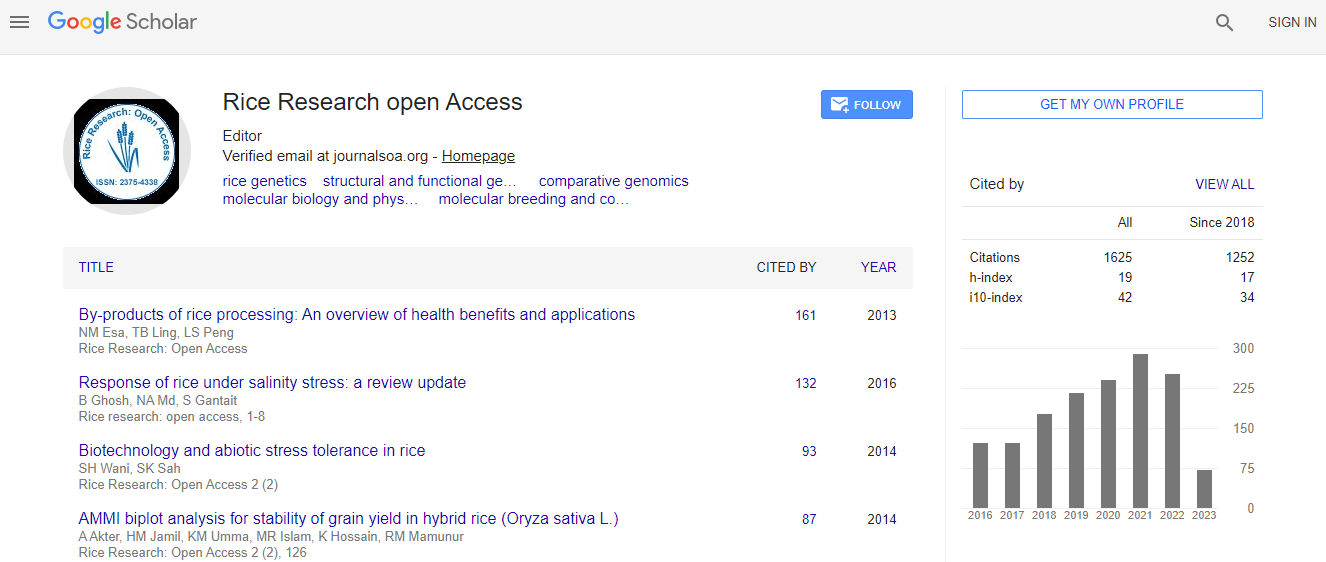Review Article
Zinc in Rice-Wheat Irrigated Ecosystem
Mitali Mandal1 and Dilip Kumar Das2*
1Department of Soil Science and Agricultural Chemistry, College of Agriculture, Orissa University of Agriculture and technology, India
2Department of Agricultural Chemistry and Soil Science, Faculty of Agriculture, Krishi Viswavidyalaya, India
- Corresponding Author:
- Dilip Kumar Das
Department of Agricultural Chemistry and Soil Science
Faculty of Agriculture, Krishi Viswavidyalaya, India
E-mail:dkdas1231@rediffmail.com
Received September 11, 2013; Accepted October 14, 2013; Published October 18, 2013
Citation: Mandal M, Das DK (2013) Zinc in Rice-Wheat Irrigated Ecosystem. J Rice Res 1:111. doi: 10.4172/2375-4338.1000111
Copyright: © 2013 Mandal M, et al. This is an open-access article distributed under the terms of the Creative Commons Attribution License, which permits unrestricted use, distribution, and reproduction in any medium, provided the original author and source are credited.
Abstract
Zinc has received a great deal of importance in crop production especially in a rice-wheat cropping system during the last few years, because of the report of widespread occurrence of its deficiency from different parts of the country limiting crop production. Significant response of rice-wheat to Zn fertilization has also been reported by different investigators from almost all the parts of India. The main reasons for the occurrence of Zn deficiency is the adoption of intensive cropping programme with high yielding varieties and modern agro techniques like use of high analysis chemical fertilizers, use of pesticides with the simultaneous very limited use of on-farm inputs like organic manures, crop residues etc.
Zinc is one of the important essential micronutrients for plants. The problem seems to be more acute for ricewheat as around half of the total rice-wheat area found to be severely affected by Zn deficiency. Zinc plays an important role in different plant metabolism processes like development of cell wall, respiration, photosynthesis, enzyme activity, auxin and protein synthesis, and other bio-chemical functions etc. amongst all the micronutrients Zn deficiency continues to be one of the key factors in determining the crop production in India and other countries of the World. Various factors associated with Zn deficiency are acid sandy soils low in total zinc, neutral or alkaline soils having higher amount of fine clay, silt and available phosphorus, organic soils etc.
Intensive cultivation and growing of exhaustive crops have made the soil deficient in macro as well as in
micronutrients. Now a day the use of only nitrogenous and phosphatic fertilizers also create nutrient imbalances particularly of Zn in soils. Although the requirement of micronutrients is very low, its effect on crop yield is, however, very significant.
The favourable rice-wheat environment is found mainly in the western part of the rice-wheat belt, where wheat is the dominant crop in Pakistan, the northwestern Indian states of Punjab and Haryana, and western Uttar Pradesh. The less favourable rice-wheat environment occurs in the eastern part of the Indo-Gangetic belt, where rice is the dominant crop in Bangladesh, West Bengal, the northern parts of Bihar and Uttar Pradesh and the Terai region of Nepal.
Geographically, the favourable rice-wheat environments in the Indo-Gangetic plains are located in the western part, where winter environmental conditions are suited for wheat, irrigation infra structure is good, marketing facilities are available, and both rice and wheat yields are high. The less favourable rice-wheat environments occur in the eastern part and are associated with partially irrigated and rain fed systems, and a shorter growing period for wheat. More detailed agroclimatic analysis would provide an in-depth understanding of the environmental constraints (e.g. Draught stress and flood proneness) for geographical targeting of varietal and crop management strategies in both the favourable and less favourable rice-wheat environments.

